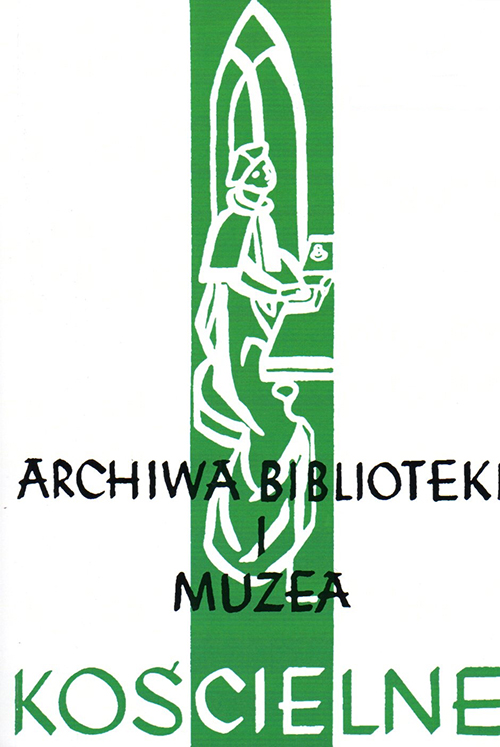Granice diecezji kujawsko-kaliskiej
The boundaries of the Diocese of Kujawy and Kalisz
Author(s): Józef SzymańskiSubject(s): Christian Theology and Religion, History, Geography, Regional studies
Published by: Katolicki Uniwersytet Lubelski Jana Pawła II - Wydział Teologii
Keywords: the Diocese Kujawy and Kalisz; the Diocese of Włocławek; diocesan boundaries
Summary/Abstract: Changes in the church organization on Polish soil were caused by political considerations (partitions). The Diocese of Kujawy and Pomerania, that is Włocławek, maintained its unity, despite political cordons, after the first partition of Poland, at the time of the Duchy of Warsaw and in the initial period after the Congress of Vienna (at the time of so-called Kingdom of Poland). Diocesan boundaries in the areas which formerly were part of the Polish Republic were reorganized following the diplomatic efforts of the occupying countries, especially Russia and Prussia, in the Holy See. They invoked so-called Petersburg Convention, which unilaterally stated that a hierarch who had his seat in one country could not exercise ecclesiastical jurisdiction in another state. The Bull Ex imposita Nobis of June 30, 1818 delimited new diocesan boundaries in the Kingdom of Poland. 272 former parishes of the Archdiocese of Gniezno and 15 parishes from other dioceses were added to 45 parishes from the old territory. The Bull gave the diocese a new name: "Włocławek, or Kalisz." The final shape of the diocese in 1818 was determined by the executor, Franciszek Skarbek Malczewski, a former Bishop of Włocławek, who became the first Archbishop of Warsaw. The new spatial arrangement of the diocese was completely different from the old boundaries. Before the reorganization, the diocese was oriented towards the north and it reached the Baltic Sea; after the changes, it stretched far to the south, beyond Czestochowa.At a time of national slavery, the Diocese of Kujawy and Kalisz was the largest one in the Kingdom of Poland (after regaining independence by Poland it had 1,614,000 of the faithful, covering 390 parishes and 39 deaneries). It was not until Poland regained its independence that new diocesan boundaries were delimited.
Journal: Archiwa, Biblioteki i Muzea Kościelne
- Issue Year: 2015
- Issue No: 104
- Page Range: 311-321
- Page Count: 11
- Language: Polish

